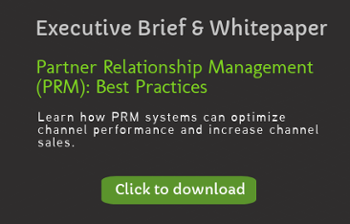If you want your company’s results to improve, you need to be measuring performance at every turn. A critical first step is to evaluate what KPIs (Key Performance Indicators) are important to your business success. Not only should these KPI factor internal metrics, but also those that are relevant to the success of your channel partners as well. Without establishing these baselines, you’ll be greatly limited in terms of what’s working and what’s not.
Increased revenues are always a good sign, but what if it isn’t actually translating to better profits? What if you’re seeing better profits, but your customer pool is actually shrinking? With the right KPIs, you can get a deeper understanding of your company’s performance. Keeping your business partners informed about them and you’ll all be on track for better results.
Partner Acquisition Costs
What does it cost the company to bring on a new partner? When evaluating this KPI, take into consideration the marketing costs required to attract that partner, the time required to nurture the partner before they come on, the on-boarding cost required to bring that partner on to your platforms, add new accounts, etc. Once this cost is established, look for opportunities to optimize.
One way to easily reduce the Partner Acquisition Cost is to reduce on-boarding costs through automation and increased efficiencies. Instead of lengthy phone calls explaining the process and countless hours manually emailing and exchanging on-boarding documents, consider a streamlined solution like Partner Relationship Management software that will let you create one standardized on-boarding workflow that each new partner can walk through.
This lets every partner know what is needed of them from the outset and allows you to monitor that progress more effectively. Creating a formal on-boarding process using a PRM system can save time, and allows your partners to start selling your products much sooner.
READ MORE: How to Get the Metrics You Need to Improve Channel Sales
Customer Acquisition Costs
Getting new customers is always a plus. It’s one of the main reasons companies like yours bring on business partners. However, you have to appreciate the KPIs involved with attracting new customers. The most important one is the actual cost of acquisition.
If you bring on 100 new customers this year and they’re going to provide you with $10,000 in revenue, that may good or bad depending on your historical figures. And when you factor in what those customers are likely to bring you over the lifetime of each relationship, that number will certainly change accordingly. Regardless of whether you see those numbers as good or bad, the fact is that you need that information to base future decisions.
Total Lifetime Value of Customer
This KPI tends to be most important for SaaS (Software as a Service) businesses or others that operate on a subscription model. What your company would have to do is look at how much a customer needs to pay a month and then multiply that by how long you believe they will stay with you. Now you understand how much each customer is worth to your business. With this KPI, you can compare it to your customer acquisition cost to see how much it’s worth spending on that figure.
Payback Time
Now you want to know how long it will take you to get back that acquisition cost. Like we touched on with customer acquisition costs, you may get all the money back that you spent on that amount, but what if it takes 10 years? Will most customers still be around in 10 years? Most businesses can’t wait that long to cover their acquisition expenses or extend their risk that far into the future.
Fortunately, this is a pretty easy amount to calculate. Take the adjusted revenue you can expect from your average customer per month. Then divide your acquisition costs by that number and you now know how many months you’ll have to wait until you get your investment back.
Communicating KPIs to Your Sales Partners
There are a number of ways you can communicate these important numbers to your sales partners. More traditional tactics involve the manual task of updating spreadsheets on a monthly/quarterly/annual basis and distributing those via email. Partner Relationship Management (PRM) software has become more prevalent over the last decade and allows a more automated process of reporting and dashboard capabilities that allow your company and your partners to see the same information in real-time. This improves your ability to remain on the same page with your partners and make more strategic decisions earlier in the process.
These KPIs have the power to literally make or break your business and the same goes for your partner relationships. Effectively delivering this information will ensure that your sales channel will be more accountable to exceeding the goals you have outlined.

